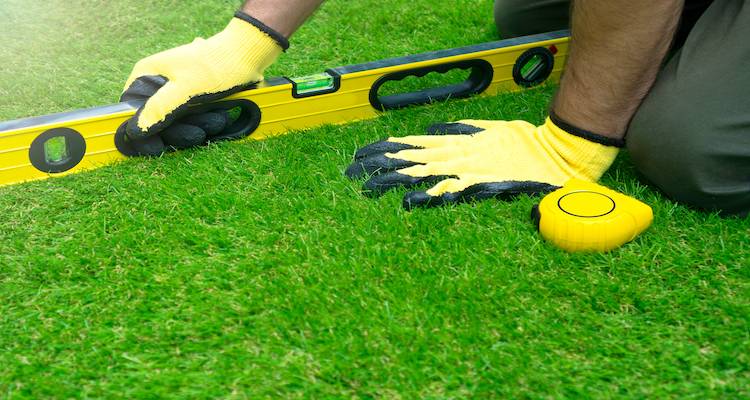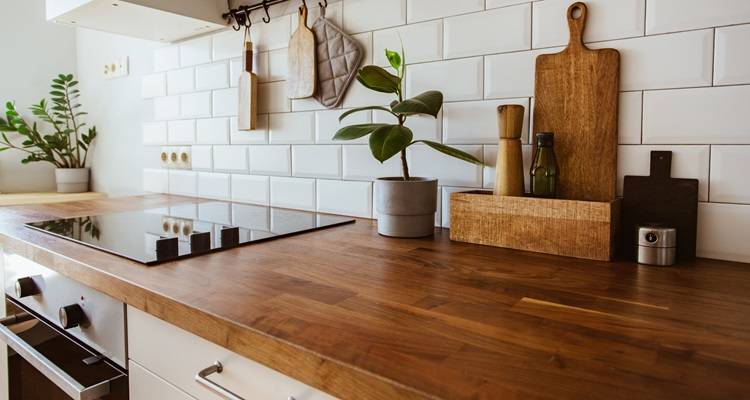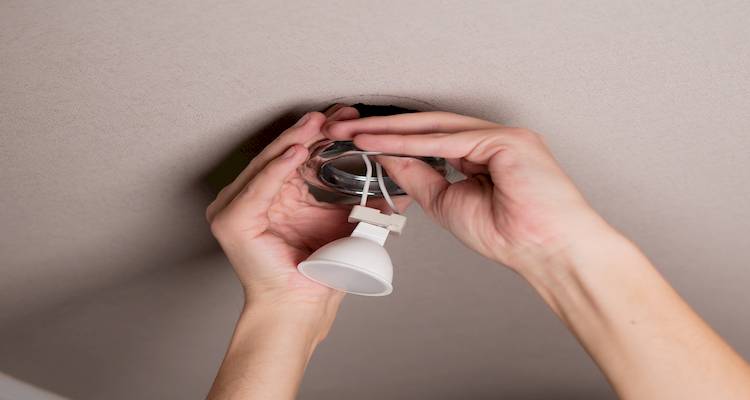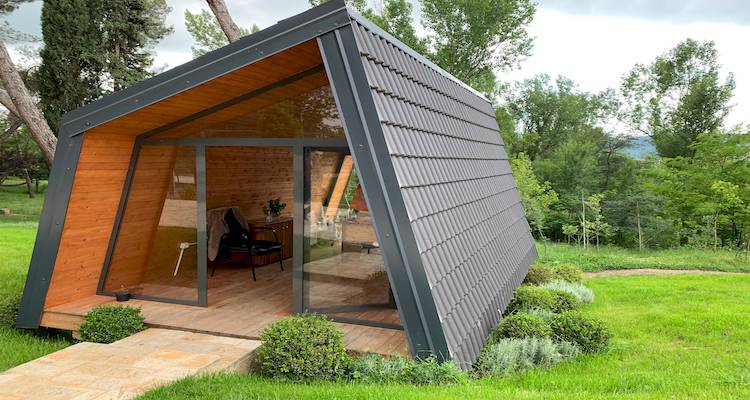Garden Levelling Cost
- The average cost of levelling a garden is around £6,500.
- The job will take approximately 1 to 2 days to complete.
- A complete pricing breakdown, which includes cost factors to consider, along with what such a task usually involves.
- How long the job should approximately take, and a general overview of what types of services can be performed.
- How to find and hire a gardener.
Welcome to our levelling a garden cost guide!
We cover all the costs you can expect when levelling your garden, including labour fees, material costs and other relevant information you may need to consider.
To give you some idea in terms of an average cost, you're looking at around £6,500.
Just need a quote?
If you'd like to hire a gardener to perform a garden levelling service for you, we can help you there too!
Let's get started below...

£6,500
Table of Contents
- How Much to Level a Garden?
- Supply Only Costs
- Additional Costs
- Labour Costs and Timescales
- Cost Factors of Garden Levelling
- What's Involved in Garden Levelling?
- Can I Level a Garden Myself?
- Building Regulations & Planning Permission for Garden Levelling
- Types of Garden Levelling
- Hiring Contractors for Garden Levelling Checklist
- FAQs
How Much to Level a Garden?
One of the many advantages of levelling a sloping garden is that it can give you usable outdoor space. Levelling a garden typically involves raising the lower parts because filling is easier than excavating.
Calculating your garden's gradient, percentage, or fall is instrumental in calculating garden levelling costs. To calculate the gradient, draw a line from the maximum height to the lowest point in your garden.
So, what are the average garden levelling prices?
A typical-sized garden that is mildly uneven, but not too bumpy, will cost between £1,500 and £2,800 to level.
However, if you have a steep garden, levelling it out will require a lot of digging, and can cost anywhere from £5,500 to £8,000.
If you want your garden to be spread out across two levels, you'll likely pay between £11,000 to £13,000 for digging, filling, and building a retaining wall.
Are different rakes necessary for the lawn, or is there one that's suitable for all maintenance jobs?
Garden Levelling Prices
How much does garden levelling cost? Let's look at the table below for some estimated costs:
| Job | Cost |
|---|---|
| Levelling an average-sized garden | £1,500 – £2,800 |
| Levelling a sloped garden | £5,500 – £8,000 |
| Two layers to two tiers | £11,000 - £13,000 |
Supply Only Costs
Levelling a garden is a difficult job. If you want to try to do it yourself, here's a list of tools, materials, and equipment you'll need to get started:
Topdressing Costs
Topdressing can fill in shallow dips and depressions in your lawn of around 2cm to 3cm in depth.
You can either buy a pre-made topdressing mixture or make your own by combining two parts sand, two parts topsoil, and one part compost.
Sand costs £50 to £80 per tonne, topsoil costs between £60 to £95, and compost costs £45 to £100.
You can fill in the holes evenly with your feet, or use a rake, which will cost between £8 and £20 - before watering. Once you've compacted the soil, then fill in any sparse areas with the topdressing and grass seed for £4 to £20 per bag.
If you have a large area to level, you may need to hire a mini digger. These are small and designed to work in tight spaces - just make sure they have access if you're working in the back of the house.
They can be expensive, however, costing £1,200 to £1,500 or more to hire.
Additional Costs
When getting your garden levelled, you may want to add on some extra gardening and landscaping jobs at the same time to get your outdoor space looking as good as it possibly can.
However, these extra jobs come with extra prices - which we'll dive into now:
Patio Cost
The average price of laying a patio in a 20m² area ranges between £1,000 and £2,800.
This price includes excavating the area, laying the foundations, purchasing, and laying the patio slabs.

Prices will vary depending on the materials used. For instance, budget options, including concrete and brick patio slabs, start at £18 per m².
Premium patios are typically made of slate, which varies from £1,000 to £4,000 for installation, and a stone patio can cost up to £4,800.
Landscaping Costs
Landscaping costs can be affected by the size of the garden, ease of accessibility, and where you live.
Property location is important because landscapers, like construction companies in general, charge different rates in different regions.
Here are a few services a landscaper can offer you, and their associated prices:
Laying Turf
If you hire a landscaper to lay turf in your garden, the average cost will be £300 to £350 for a 20m² area, and £700 to £800 for a 50m² area.
For something with less maintenance, artificial grass costs around £1,400 to £1,700 for a 20m² area, and up to £3,400 to £4,200 for a 50m² area.
Decking

Laying decking typically costs around £650 to £800 for 6m², or £1,100 to £1,300 for 10m².
Raised Vegetable Bed
If you want a raised vegetable bed constructed in your garden, you can expect to pay between £150 to £550 for a 4m² area.
Patio
When it comes to adding a patio, the cost is around £400 to £520 for 4m², or £850 to £1,300 for 10m².
Pond
Building a 1m² pond in your back garden will cost between £280 and £560.
Garden Waste Removal
Several factors determine garden clearance prices. These are the amount of waste you have, your type, and how you want it removed.
It can cost between £20 and £330 to hire companies with a van to come and eliminate your garden rubbish. The low end of this range assumes you have very little waste, while the highest cost covers up to 2 tonnes of waste.
Skip Hire
Another possibility is to rent a skip and then fill it yourself. Skip hire costs between £80 and £420, varying according to the size of the skip required. You can take your time with the work and dispose of other waste at the same time if necessary.
If you want to get rid of a small volume of garden waste regularly, check to see if your municipality has a garden waste removal programme. These are either free or cost between £160 and £210 per year.
Garden Fencing
The cost of fence installation is determined by two major factors: the size and type of fence chosen.

For example, if you only need a short section of fence, such as down one side of your garden, the installation will cost around £550 to £750, and take about a day. This would result in a 6-foot-tall fence in the most popular style.
If you need to fit the fence all around the entire perimeter of your garden and want a more modern look, the fencing cost could range between £2,200 and £3,200.
Labour Costs and Timescales
Professional garden levellers charge around £120 to £200 per day or £10 to £18 per hour for simple projects. It should take 1 to 2 days to level a garden.
Most gardeners charge by the hour. The location and size of the company you choose also impact labour rates.
Although it may be tempting to save money by levelling a sloping garden yourself in the UK, hiring a professional will save you money in the long run.
This is because a professional will know the precise slope measurements and the thickness and requirements of the retaining wall to resist years of changing weather conditions.
Cost Factors of Garden Levelling
When levelling your garden, extra costs can easily increase your overall cost. Let's review the different cost factors of garden levelling and what they include.
Garden Dimensions and Accessibility
The more square metres you have, the more costly it is to level a sloping garden in the UK.
A larger land area requires more manpower to clean, fill, and prepare, and takes longer to complete as a result.
These large areas also call for larger equipment, such as bulldozers and excavators, incurring additional costs.
It's important to note that if you live in the countryside, big equipment costs may be higher due to remote locations or tricky access.
In addition, potential obstacles such as gates, fences, or other issues that may affect the location's accessibility must be flagged with the contractor before the site visit.
Soil, Terrain, and Slope
Each slope is unique, with some being more difficult than others. Shallow slopes will require less time and materials than steep slopes.
If you have large trees, rocks, or shrubs that you want removed, you may need to hire an earthmoving contractor - which will incur additional costs.
Materials and Equipment
The supplies used to fill the land, including dirt and topsoil, can affect the overall cost. Because the goal is to grow an abundant garden, high-quality topsoil is essential.
In addition to topsoil, fill dirt is an important material for levelling your sloping garden. Although fill dirt is often cheap, the cost of transporting, digging, hauling, and attempting to remove it is not.

A retaining wall and the materials used to build it, in addition to dirt and soil, are important factors in calculating levelling garden costs in the UK.
For example, concrete blocks are frequently more costly than other materials but last longer. On the other hand, breezeblocks are less expensive but harder to hide.
If you want a surface that matches the building of your home, you can use house bricks or natural stone.
When constructing a retaining wall, remember that the structure must be strong enough to withstand heavy rainfall and future wear and tear. Replacing a concrete barrier may prove to be more expensive than the initial investment and uncomfortable in the future.
Location
The price of levelling and turfing a garden depends on where you live. For example, most lawn care services or garden levelling service fees are more expensive in London and the southeast than in the north or west of the UK.
Larger garden service companies will charge more for their services than local self-employed gardeners.
What's Involved in Garden Levelling?
The process and logic are the same if the slope faces away from or toward your house.
However, if the slope is facing your house, you should leave a walkway between the retaining wall and the house, which enables access and drainage.
Make Sure You Have Permission
This is a critical first step. Check with energy providers and your local council to ensure that there are no wires under your garden that will be damaged, and that the work you are planning does not require planning permission.
If planning permission is required, ensure you have it before beginning work.
Calculate the Slope's Rise and Run
This step will allow you to determine the height of the retaining wall. A string is tied between two stakes, one at the top and one at the bottom of the slope.
The string is known as the 'run,' and its height on the second stake is known as the 'rise.'
The string on the top stake should be at ground level and extend to meet the other stake. Place a spirit level on the line at this point to ensure it is level.
This step determines the height of your retaining wall and the soil required to fill the gap behind it.
The approximate volume of the space behind the retaining wall can then be calculated by multiplying the area of this triangle by the size of your retaining wall.

Water The Area Where You Will Be Digging
Aim to do this at least 24 hours before digging to make the ground easier to work with. But be careful not to overwater, as wet soil can be just as difficult to work with as dry soil.
Construct a Retaining Wall Using Wooden Sleepers
A retaining wall may necessitate some heavy lifting. A retaining wall is intended to support newly raised land in your garden and keep your lovely new flat lawn from collapsing after rain.
The retaining wall resists the pressure of the soil and the water that soaks into it when it rains. Therefore, it's critical that the components used for the wall be strong enough to prevent it from collapsing.
Aim for a retaining wall no more than 2 feet tall. Beyond this point, they are subjected to high-pressure levels, increasing the likelihood of collapse.
If your sloped garden has a rise of more than 2 feet, consider constructing a series of terraces instead.
Pile Soil Behind the Retaining Wall
Pile soil behind the retaining wall once it is in place and stable. This soil will be the foundation of your new, level garden, so proceed cautiously until the level ground is achieved.
You can order topsoil to fill the gap underneath your retaining wall if you only raise a lawn. However, if you are lowering a section of the lawn, you can fill the gap behind the retaining wall with soil taken from here.
Check the Level
To ensure the land is flat, use a spirit level. Before compacting the soil, ensure it is level and at the proper level.
You may need to add or remove some soil before proceeding to the next step. Again, gauging the level by eye is a good starting point, but the spirit level you used will also come in handy here: lay it out on the lawn in a few places to ensure everything is flat and even.
You can also use the stakes and string method: place a stake in each corner of your lawn and run string between them at an even height on each stake. If you want to ensure that your soil has enough nutrients, add a uniform layer of compost at this stage.
Compact the Soil
Now that the soil has been levelled, compacting it will aid in removing any air and cavities. This step reduces the possibility of bumps and lumps appearing in your newly levelled garden after the next rain.
In addition, it protects the retaining wall's structural integrity by exposing it to more constant pressures.
Lay New Grass
It's now time to plant or lay grass over the exposed soil. If you're starting from seed, scatter the seeds evenly over the soil according to the instructions on the seed packet.
If you're using turf, ensure the sheets are as flat and close together as possible. It will be nearly impossible to see the lines or gaps between the various pieces once they have taken root.
To flatten a lawn, compact the turf roller. If you went that route, get the soil compactor out again and run it over the turf. This will encourage the roots to grow faster and ensure the grass is safe to walk on.
Can I Level a Garden Myself?
Levelling your garden can be done as a DIY task. However, multiple factors could make the job more difficult for you.
If you do it yourself, try to use the soil you dig up to level other areas. Skips can be expensive, and removing and disposing of soil increases the job's cost.
Labour is the main area where you can save money. If possible, level your lawn in early spring to give your new grass the best chance of growing strong over the summer.

A professional could also access bulldozers, bobcat machines, and excavators. A professional would be aware of the areas that need to be protected from soil erosion and would be able to quickly locate dirt fill and topsoil.
Hiring a professional will help ensure that your project is well-executed and will last for years. It will also save you the time and effort of digging dirt, relocating land, borrowing heavy machinery, and obtaining various materials.
Building Regulations & Planning Permission for Garden Levelling
It's a popular misunderstanding that planning laws only apply to structures. However, some changes to the grounds and gardens are subject to planning permission and/or building control.
Garden designers and landscape contractors who understand the rules and regulations will assist you in avoiding problems.
They'll also be familiar with CDM regulations, which will come into play once construction begins.
Any increase in garden level that exceeds 300mm requires planning. It is recommended that when constructing a retaining structure, you consider building codes to ensure proper drainage.
Types of Garden Levelling
Let's take a closer look at the different types of garden levelling and their best use cases:
Low Terraces
One method for levelling a sloping garden is to build stair-like terraces. These are useful to create planting or seating areas in your garden.
These are best for gardens with mild slopes and are great as a budget-friendly option.
Pros
- ✔ Simple and inexpensive
- ✔ Easy enough to do as a DIY project
Cons
- ✖ Not appropriate for small gardens
- ✖ Will be unsuitable in gardens with steep slopes
Steep Slope Terracing
Terracing steeply sloping gardens requires more effort than simply moving soil around the garden. Moving quickly is critical when levelling a steep slope to avoid harming your house's foundation.
Pros
- ✔ A wide range of options in both design and materials
- ✔ Creates a long-lasting, strong structure
Cons
- ✖ More expensive to construct compared to a low terrace
- ✖ Not as suitable for DIY due to the intensive labour
Retaining Wall

Terracing can be replaced with a retaining wall around the garden to create a flat level. This is an excellent option if you don't have a lot of space, or simply don't want to go through a lengthy terracing process.
Pros
- ✔ Good for smaller gardens
- ✔ Simpler to construct than full terracing
Cons
- ✖ High-quality, strong materials are needed to ensure longevity
- ✖ Can be at risk of collapsing if not properly constructed
Hiring Contractors for Garden Levelling Checklist
Before hiring a gardener, ask about their experience and working style to ensure they're a good fit.
When contacting prospective gardeners, don't forget to ask:
- How long have you or your company been in business?
- What kind of project experience do you have?
- Can you confirm that you have all of the necessary permits and licences?
- Do you have any references I could contact?
- What is the project's timeline?
- How do you normally deal with weeds and pests?










